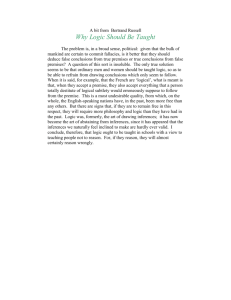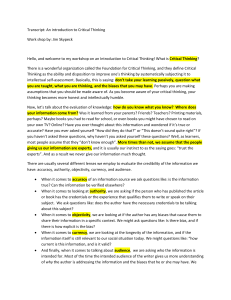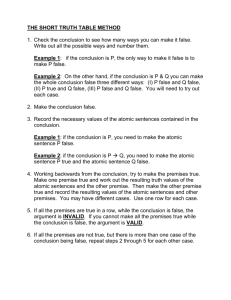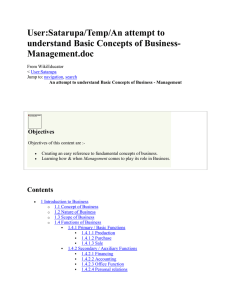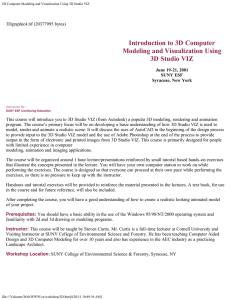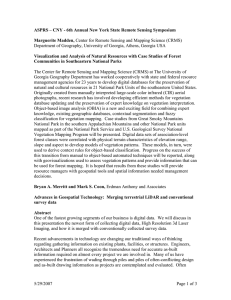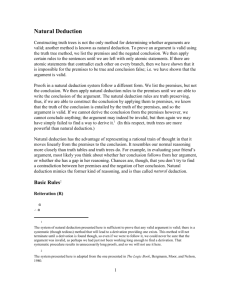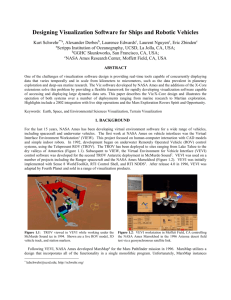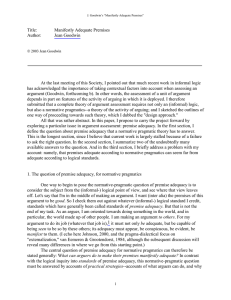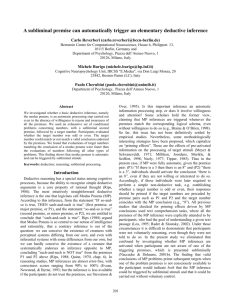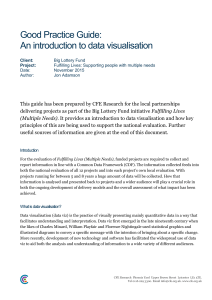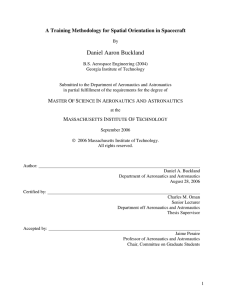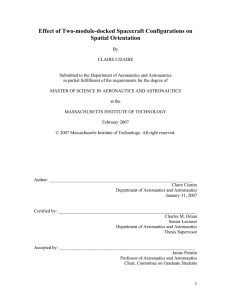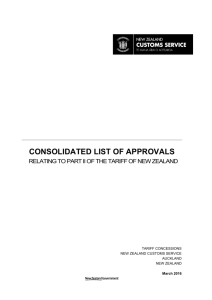SUMMARY CHAPTER NO.7
advertisement
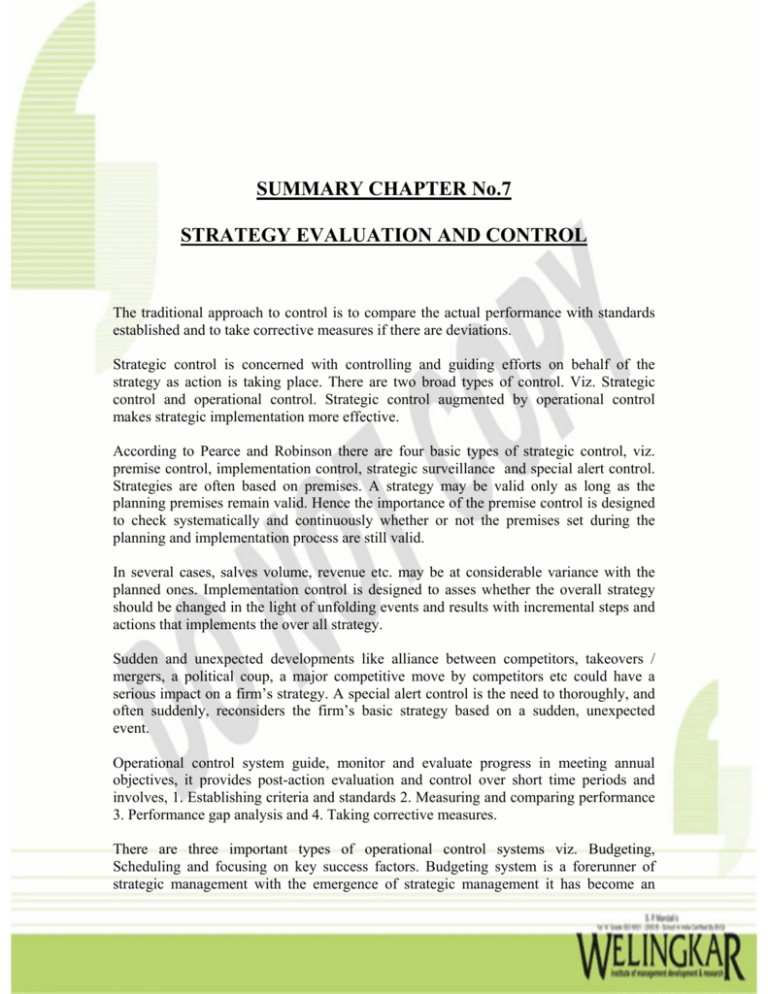
SUMMARY CHAPTER No.7 STRATEGY EVALUATION AND CONTROL The traditional approach to control is to compare the actual performance with standards established and to take corrective measures if there are deviations. Strategic control is concerned with controlling and guiding efforts on behalf of the strategy as action is taking place. There are two broad types of control. Viz. Strategic control and operational control. Strategic control augmented by operational control makes strategic implementation more effective. According to Pearce and Robinson there are four basic types of strategic control, viz. premise control, implementation control, strategic surveillance and special alert control. Strategies are often based on premises. A strategy may be valid only as long as the planning premises remain valid. Hence the importance of the premise control is designed to check systematically and continuously whether or not the premises set during the planning and implementation process are still valid. In several cases, salves volume, revenue etc. may be at considerable variance with the planned ones. Implementation control is designed to asses whether the overall strategy should be changed in the light of unfolding events and results with incremental steps and actions that implements the over all strategy. Sudden and unexpected developments like alliance between competitors, takeovers / mergers, a political coup, a major competitive move by competitors etc could have a serious impact on a firm’s strategy. A special alert control is the need to thoroughly, and often suddenly, reconsiders the firm’s basic strategy based on a sudden, unexpected event. Operational control system guide, monitor and evaluate progress in meeting annual objectives, it provides post-action evaluation and control over short time periods and involves, 1. Establishing criteria and standards 2. Measuring and comparing performance 3. Performance gap analysis and 4. Taking corrective measures. There are three important types of operational control systems viz. Budgeting, Scheduling and focusing on key success factors. Budgeting system is a forerunner of strategic management with the emergence of strategic management it has become an important tool to translate strategic plans to concrete activities. Budgeting may be done in respect of all important activities; it may be in financial or physical terms or both. Scheduling is very important planning tool for allocating the use of a time constrained resource or arranging the sequence of interdependent activities it is very important in project implementing. Key success factors are critical factors which contribute to the success such as productivity, quality, and employees move and market share. Preventive control is an alternative to direct control. The principle of preventive control is that the higher the quality of mangers and their subordinates, the less will be the need for direct control. This suggests the need to develop better managers who will skillfully apply concepts, techniques and principles and who will look at managing and managerial problems from a systems point of views, thus eliminating undesirable results caused by poor management. Due to preventive control subordinate managers know what is expected of them, understand the nature of managing and feel a close relationship between performance and measurement. There are some essential requirements for an evaluation system viz. Evaluation system should be objective based, and it should be economical i.e. the cost must be justifiable with its utility, and should be reality oriented. A strategy evaluation system must be pervasive, that the need for it is appreciated throughout the organization in general and by the functional area concerned and people directly associated with it in particular. The extent of simplicity or complexity depends on a number of factors for strategy evaluation. It is necessary to take people into confidence to ensure their positive and active involvement. They should also know their contribution to success or failure in achieving the objectives. Measurements have to be conguments with the events measured. Control must be focused on action; the findings of the control must reach the persons responsible to take needed action in time. A company should also be well prepared to deal with contingencies and a contingency plan is to cope up with critical developments where deviations from the strategic planning premise. Linneman and Chandran report that contingency planning gives major benefits like it permits quick response to change, it prevents panic in crises situations and makes managers more adoptable by encouraging them to appreciate just how variable the future can be. A budget is a predetermined detail plan of action developed and distributed as a guide to current operations and as a partial basis for subsequent evaluation of performance and budgetary control refers to the management measures taken to ensure that the standard laid down are maintained and the planned results are achieved . An organization may have a master budget and may be further divided into several sub budgets. Programme Evaluation and Review Technique (PERT) and Critical Path Method (CPM) are very useful in the basic management functions of planning scheduling and control.
